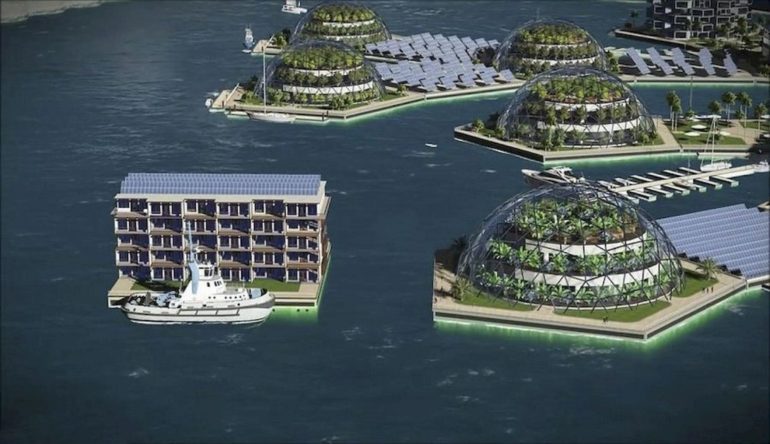Busan, the second-largest city in South Korea, has initiated a fascinating project by collaborating with Oceanix and United Nations-Habitat to develop the world’s first “floating city.” Construction on this project will start by 2023. It is going to be heaven for people as it will be extremely eco-friendly for the reason that it will employ solar energy technology to generate energy. The solar panels would be laid out across the city, i.e., on the rooftops of the houses and on the seawater as well. To keep it cleaner and more environmentally friendly, the city plans to permit the use of electric vehicles only in that area. The design is very unique – there will be a group of community areas, or what we call “neighborhoods,” and every individual area will be collateral with another, thus building a linked community. These “neighborhoods” would be synchronized with each other through a course of bridges, which would serve as a path to connect the people of all the neighboring areas.

We are well aware of the fact that climate change leads to the elevation of sea level, which always has a disastrous effect on the habitat. Based upon this striking concern, the United Nations Habitat and Oceanix came together on one platform to curb the effects of this prevailing issue by building a prototype of a “floating city”. This is because Busan is a very crowded maritime hub, with different types of activities going on there, so the decision to build a floating city there can lessen the threat of sea-level rise.
This breathtakingly beautiful city would have the capacity to integrate around 12,000 people initially. However, in the future, it will be expanded to accommodate more than 100,000 people. There will be three different sections into which this city is divided as per the prototype. It would include lodgings, living areas, and buildings—all constructed according to minimalistic design. The first model depicts a variety of stalls, houses, shops, and leisure areas expanded over an area of about 15.5 acres. Oceanix co-founder, Itai Medamombe, while talking to Business Insider, said, “The project’s anticipated cost is roughly $200 million, and we may see the first elements of the city as early as 2025. However, it’s unknown when individuals will be able to buy flats and finally live there.”



